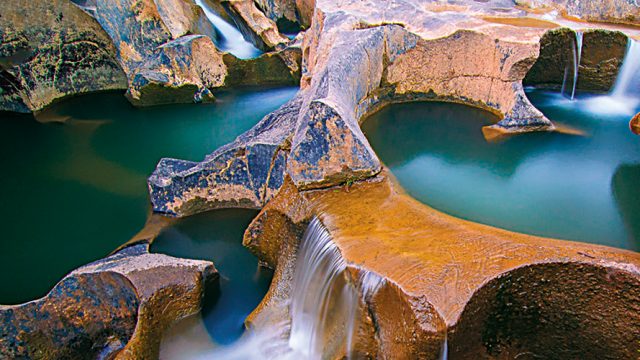I never thought potholes could be picturesque. That was until I visited Nighoj, a tiny village in Ahmednagar district of Maharashtra, nearly 30km of a winding road journey from Ranjangaon on the Pune-Ahmednagar highway. Known mostly for its temples, this pilgrim village also boasts of the largest natural potholes’ in Asia. When I first stepped on the crater-riddled terrain and looked down, I saw a green-tinted Kukdi river meander lazily through it. The artistry of the terrain was otherworldly.
The best part about these potholes, or ‘Giant’s Kettles’, is their isolation. Apart from a few people who visit the famous Malganga Devi Temple on the riverbank, the potholes remain unseen— aloof and mysterious in their own world. But how on earth do we have such lunar-like craters?
While the villagers and the temple priest firmly believe that this kund was formed by Malganga Devi herself for bathing, science suggests that high rainfall in the area caused the Kukdi river to flow out from the highlands with such force that it resulted in the scouring of the basalt rock. This, in turn, led to the formation of potholes thousands of years ago, of various shapes and sizes, some big enough for a human to fit in.
When I walked down the steps to the river, the stillness of the water made me wonder—how can a river as placid as this cut through rocks? It may have been ferocious thousands of years ago, but today, the Kukdi seems to be perfectly at ease in its own creation.




